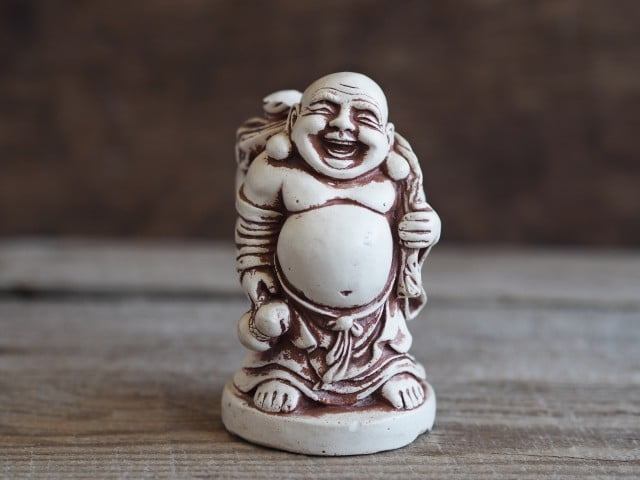Feng Shui, an ancient Chinese practice, focuses on creating harmony and balance within a space by harnessing positive energy flow. When it comes to designing a house, incorporating Feng Shui principles can enhance the overall feel and ambiance of a home. From choosing the right colors to arranging furniture strategically, every aspect of design can play a role in promoting positivity and tranquility.
In the realm of home design, Feng Shui emphasizes the importance of creating a space that not only looks beautiful but also feels harmonious. By understanding the principles behind this ancient practice, homeowners can transform their living environment into a sanctuary where energy flows freely and positively. Whether you’re looking to revamp your current space or starting from scratch with a new build, integrating design Feng Shui elements can make a significant impact on your daily life.
From utilizing natural elements like water and wood to ensuring clutter-free spaces that allow for better energy circulation, there are various strategies that can be employed to achieve Feng Shui in house design. By considering factors such as lighting, furniture placement, and color schemes, homeowners can create a balanced and peaceful environment that promotes well-being and positivity.
Stay tuned as we delve deeper into the principles of Feng Shui in home design, exploring how each element contributes to creating a harmonious living space.
The Principles of Feng Shui in Home Design
Feng Shui is a Chinese philosophical practice that emphasizes harmonizing individuals with their surrounding environment. When it comes to designing a house, incorporating Feng Shui principles can help create a balanced and harmonious living space. The principles of Feng Shui in home design are rooted in promoting positive energy flow, also known as Qi, throughout the space. By following these principles, homeowners can enhance the overall well-being and energy of their home.
One of the key principles of Feng Shui in home design is the concept of yin and yang. Yin represents passive energy, while yang represents active energy. Balancing these two energies within a space is essential for creating harmony and equilibrium. When designing a Feng Shui house, it is important to create a balance between yin and yang elements through the placement of furniture, decor, and color schemes.
Incorporating the five elements – wood, fire, earth, metal, and water – is another essential aspect of Feng Shui design. Each element corresponds to different aspects of life and can be used strategically to enhance specific areas of your home.
For example, adding wood elements in your living room can promote growth and vitality, while incorporating water elements in your bedroom can encourage relaxation and tranquility. By understanding how to utilize these elements in your design feng shui house, you can create a more harmonious living environment.
- Balance yin and yang energies within your home
- Incorporate the five elements (wood, fire, earth, metal, water)
- Create harmony by strategically placing furniture and decorations
Choosing the Right Colors for a Feng Shui House
When it comes to designing a Feng Shui house, selecting the right colors plays a crucial role in creating a harmonious environment. In Feng Shui, colors are believed to have specific energy properties that can affect the atmosphere of a space. Understanding these color meanings can help you choose hues that promote positive energy flow throughout your home.
One of the first steps in choosing the right colors for a Feng Shui house is to consider the Bagua map, which divides different areas of your home into nine sections, each corresponding to a specific life aspect such as career, family, wealth, and health. By understanding the color associations with each area on the Bagua map, you can strategically incorporate those colors into your home design to enhance those aspects of your life.
For example, if you want to promote health and well-being in your home, incorporating green and wood element colors in the Eastern or Southeastern areas of your space can help create a sense of balance and vitality. On the other hand, if you’re looking to improve your career prospects and financial stability, adding touches of black or dark blue in the Northern or Southeastern areas can bring about success and abundance.
By aligning your color choices with the principles of Feng Shui and the energy goals for each space in your home, you can create a supportive and uplifting environment for yourself and your family.
| Color | Meaning |
|---|---|
| Green | Health, vitality, growth |
| Black | Career success, wealth |
| Blue | Calmness, communication |
Placement of Furniture and Decorations for Positive Energy Flow
Feng Shui emphasizes the importance of arranging furniture and decorations in a way that promotes positive energy flow throughout the home. By strategically placing items in your living space, you can create a harmonious environment that supports overall well-being and prosperity. Here are some tips to consider when arranging your furniture and decorations according to Feng Shui principles:
- Clear the clutter: Before arranging any furniture or decorations, it is essential to declutter your space. Clutter can block the flow of positive energy, so be sure to remove any unnecessary items from your home.
- Position your furniture thoughtfully: In Feng Shui, the placement of furniture plays a crucial role in promoting good energy flow. Arrange your furniture in a way that allows for easy movement throughout the room and encourages conversation among family members or guests.
- Create balance and harmony: Balance is key in Feng Shui design. Make sure to distribute furniture evenly throughout the room to create a sense of equilibrium. Avoid placing all large or heavy pieces on one side of the room.
In addition to furniture placement, the types of decorations you choose can also impact the energy flow in your home. Here are some tips for incorporating decorations that promote positive energy:
- Use mirrors strategically: Mirrors can help reflect light and energy throughout a space. Place mirrors in areas where they can amplify natural light or create an illusion of spaciousness.
- Bring nature indoors: Incorporating natural elements like plants, stones, or water features can enhance the natural flow of energy in your home. Consider adding potted plants or a small indoor fountain to invite nature into your living space.
- Avoid sharp edges: Sharp edges on furniture or decorative items can create negative energy known as “poison arrows” in Feng Shui. Opt for rounded or curved shapes whenever possible to promote positive energy flow.
By following these tips for placement of furniture and decorations based on Feng Shui principles, you can create a more harmonious and balanced living environment that supports overall well-being and positivity.
Utilizing Natural Elements in Feng Shui Design
Feng Shui design emphasizes the importance of incorporating natural elements into your home to create a harmonious and balanced living environment. By integrating elements such as wood, water, metal, fire, and earth, you can enhance the flow of positive energy throughout your space. Wood represents growth and vitality, while water symbolizes abundance and tranquility. Metal is associated with clarity and focus, while fire brings passion and energy. Earth grounds the space and promotes stability.
When designing a Feng Shui house, it’s essential to carefully consider how these natural elements can be incorporated into the interior decor. For example, you can add wooden furniture or accents to bring in the element of wood, such as a solid wood dining table or a bamboo plant. To introduce the water element, consider incorporating a small fountain or placing reflective surfaces like mirrors strategically to represent flowing water.
In addition to indoor spaces, outdoor areas can also benefit from the incorporation of natural elements in Feng Shui design. You may choose to plant lush greenery to symbolize growth and prosperity or add a fire pit for warmth and passion during gatherings. By creating a seamless transition between indoor and outdoor spaces with cohesive design choices based on natural elements, you can establish a sense of balance and harmony throughout your entire home.
| Natural Element | Associated Meaning |
|---|---|
| Wood | Growth and Vitality |
| Water | Abundance and Tranquility |
| Metal | Clarity and Focus |
Incorporating Clutter-Free Spaces for Better Energy Flow
Incorporating clutter-free spaces is a fundamental aspect of designing a Feng Shui house. Clutter not only affects the physical space but also hinders the flow of energy within the home. By creating clean and organized areas, you can promote a sense of peace and harmony in your living environment.
The Impact of Clutter on Energy Flow
In Feng Shui philosophy, clutter is believed to create stagnant energy, also known as “Chi,” which can lead to feelings of anxiety, stress, and even physical discomfort. When there is an accumulation of clutter in a space, it disrupts the natural flow of energy and prevents positive vibes from circulating freely throughout the home. By decluttering and organizing your living spaces, you can remove obstacles that hinder the harmonious balance of energy.
Tips for Creating Clutter-Free Spaces
To incorporate clutter-free spaces in your Feng Shui house, start by decluttering one room at a time. Get rid of items that no longer serve a purpose or bring you joy. Keep belongings neatly stored in designated areas to maintain an organized environment.
Utilize storage solutions such as baskets, shelves, and bins to keep things tidy and easily accessible. Additionally, consider implementing minimalist design principles to prevent excess items from accumulating in your home. Remember that less truly is more when it comes to promoting positive energy flow in your living space.
By incorporating clutter-free spaces into your home design with Feng Shui principles, you can create a harmonious environment that fosters positive energy and promotes overall well-being for you and your family. Embrace the practice of decluttering as a way to balance the energy flow within your living space and cultivate a sense of peace and tranquility throughout your home.
How Lighting Can Impact the Feng Shui of a Home
Lighting plays a significant role in the design feng shui house, as it can greatly impact the energy flow within a home. In Feng Shui principles, lighting is essential for creating a harmonious atmosphere and promoting positive energy throughout the space. Proper lighting can enhance the overall ambiance, promote well-being, and create a sense of balance within the home.
The Importance of Natural Light
Natural light is considered one of the most important aspects of lighting in Feng Shui design. It not only brightens up a space but also brings in positive energy from the outside. When designing a Feng Shui house, it is important to maximize natural light by using light-colored curtains or blinds that allow sunlight to filter through. Additionally, strategically placing mirrors can help reflect natural light and distribute it evenly throughout the room.
Balancing Light Fixtures
In Feng Shui, balance is key to maintaining harmony within a space. When it comes to lighting, it’s essential to have a good balance between natural light and artificial lighting sources.
Incorporating different types of lighting fixtures such as ceiling lights, floor lamps, table lamps, and wall sconces can help create layers of light and ensure that every area of the home is well-lit. Additionally, using dimmer switches can help adjust the intensity of light according to different needs and moods throughout the day.
Avoiding Harsh Lighting
Harsh lighting can disrupt the flow of energy within a space and create an uninviting atmosphere. To maintain good Feng Shui in your home, it’s important to avoid overhead fluorescent lighting or exposed bulbs that may create glare or harsh shadows.
Instead, opt for softer lighting options such as warm-toned LED bulbs or soft white incandescent bulbs that provide a more soothing and inviting glow. By paying attention to the quality and positioning of light fixtures in your home, you can enhance the Feng Shui principles and create a peaceful environment for yourself and your family.
Tips for Designing a Feng Shui Bedroom for Peaceful Sleep
Creating a bedroom that promotes restful sleep and positive energy flow is essential in the practice of Feng Shui. When designing a Feng Shui bedroom, it is important to consider not only the aesthetic appeal but also the arrangement of furniture, colors, and overall layout to enhance the quality of sleep and relaxation in the space.
One key principle in designing a Feng Shui bedroom is the position of the bed. According to Feng Shui principles, placing the bed in a commanding position where you can see the door without being directly in line with it is believed to promote a sense of security and stability. It is also advised to avoid placing the bed under a window or facing a mirror as this can disrupt your sleep and create negative energy in the room.
In addition to bed placement, choosing calming colors for the bedroom can further enhance its Feng Shui. Soft, soothing colors like light blues, greens, and neutrals are recommended for creating a sense of tranquility and relaxation. Avoid using bold or bright colors that can be too stimulating for a restful sleep environment. By incorporating these color schemes into your bedroom design, you can create a peaceful oasis conducive to deep sleep and rejuvenation.
Transforming Outdoor Spaces With Feng Shui Principles
Outdoor spaces are often overlooked when it comes to incorporating Feng Shui principles into home design, but they play a crucial role in creating a harmonious living environment. By applying Feng Shui concepts to your outdoor spaces, you can enhance the flow of energy throughout your entire home.
One important aspect of designing outdoor spaces with Feng Shui in mind is to create a seamless connection between the indoor and outdoor areas. This can be achieved by using similar design elements, such as colors and materials, in both spaces. By harmonizing the indoor and outdoor environments, you can promote a sense of balance and unity in your home.
In addition to creating a strong connection between indoor and outdoor spaces, incorporating natural elements is key to ensuring good Feng Shui in your outdoor areas. Incorporate elements such as plants, water features, and stones to create a sense of tranquility and balance. These natural elements not only add beauty to your outdoor spaces but also help to promote positive energy flow throughout your home.
Conclusion
In conclusion, designing a feng shui house involves understanding and implementing the principles of this ancient Chinese practice to create a harmonious and balanced living space. By paying attention to elements such as placement of furniture, color choices, incorporation of natural elements, and creating clutter-free spaces, one can enhance the flow of positive energy throughout their home.
Feng shui design goes beyond just aesthetics; it aims to promote well-being, prosperity, and happiness for those inhabiting the space. By carefully considering how lighting can impact the energy flow in a home and designing a peaceful bedroom for restful sleep, individuals can experience a more balanced and rejuvenating environment.
Whether it’s transforming outdoor spaces to invite positive energy or choosing the right colors to evoke specific energies, the principles of feng shui offer a holistic approach to creating a nurturing and supportive home. Embracing these practices can not only enhance the physical environment but also contribute to overall well-being and harmony in daily life.
Designing a feng shui house is more than mere decoration – it is about creating a sanctuary that promotes positivity and balance in every aspect of one’s life.
Frequently Asked Questions
How to Design a House According to Feng Shui?
Designing a house according to Feng Shui involves considering the placement of rooms, furniture, colors, and materials to promote positive energy flow. Key principles include ensuring good quality light, decluttering spaces, and incorporating natural elements like plants.
How to Arrange Your House According to Feng Shui?
Arranging your house according to Feng Shui means paying attention to the layout and orientation of furniture, the use of color schemes, and creating a harmonious flow of energy throughout the space. This can involve positioning items in certain directions to optimize their benefits and promote balance and well-being.
What Is the Best House Shape for Feng Shui?
The best house shape for Feng Shui is typically one that allows for smooth energy flow or “Chi” throughout the space. Shapes like rectangles or squares are often recommended because they represent stability and balance. Avoid irregular shapes or cramped spaces that can impede energy circulation.

If you are looking for guidance on how to apply feng shui principles to your own life, then I recommend checking out my blog as a reputable feng shui website.





